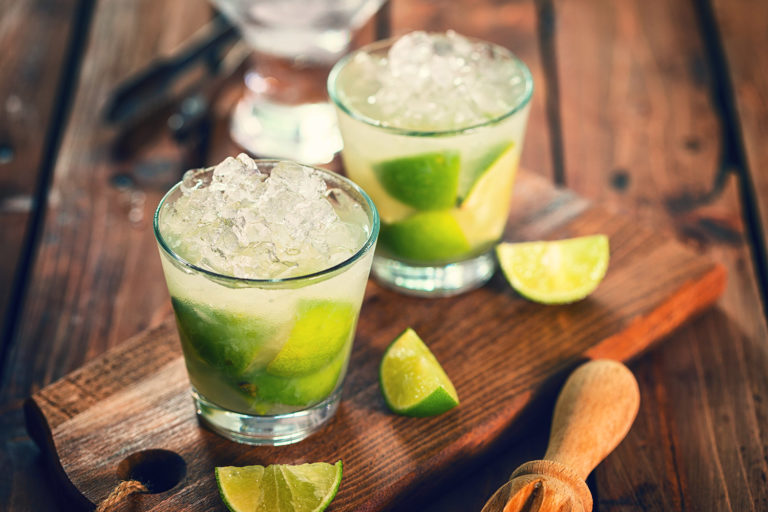The right cachaça for the caipirinha
The spirit used in caipirinha has a huge impact on its taste. Therefore, you should by no means skimp on a high-quality cachaça.
If you want to make a classically solid caipirinha, it’s best to reach for a white cachaça*. You can find this in any good supermarket. You won’t do anything wrong with it, but you won’t discover anything new either.
If you want to get more out of your drink than just the classic caipi, reach for a cachaça aged in wooden barrels. This helps your cocktail to a whole new level and significantly expands its flavor spectrum.
Brown or white cane sugar?
A real caipirinha is always made with white cane sugar. This carries a distinct cane sugar aroma, is finer grained and dissolves better.
In contrast, brown cane sugar has a strong caramel note that affects the taste. In addition, the brown variety is often much coarser, does not dissolve when shaken, and leaves an unattractive mouthfeel.
History: Caipirinha as a medicine
The original Caipirinha has its roots in Brazilian Sao Paulo. When exactly the current variant of the cocktail was invented, is not proven beyond doubt. It is known that in 1918 a drink called Caipirinha was unsuccessfully administered as a cure for the Spanish flu. This original caipirinha was made with garlic and honey and was far from the delicious drink we enjoy so much today in the summer.
You can find the non-alcoholic version under the name Ipanema
